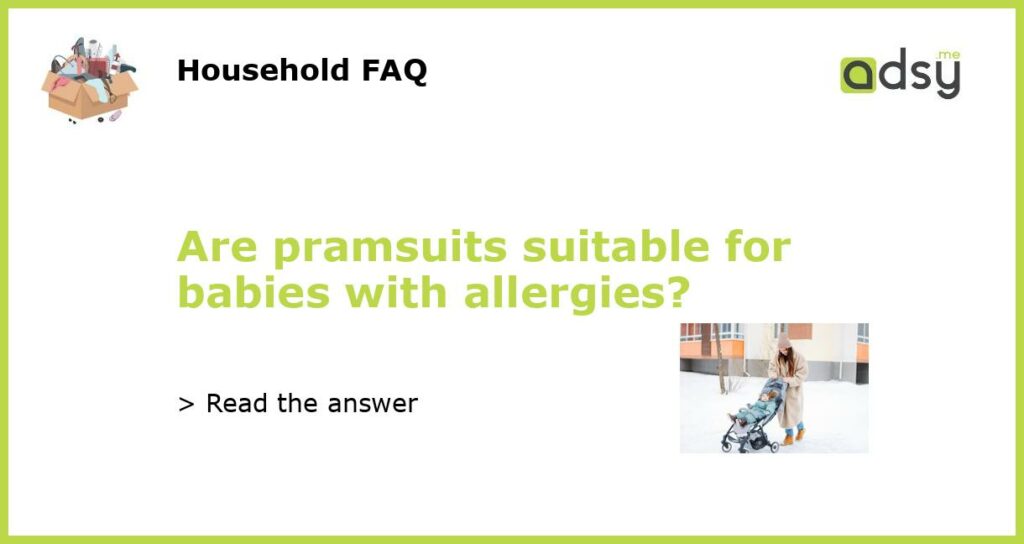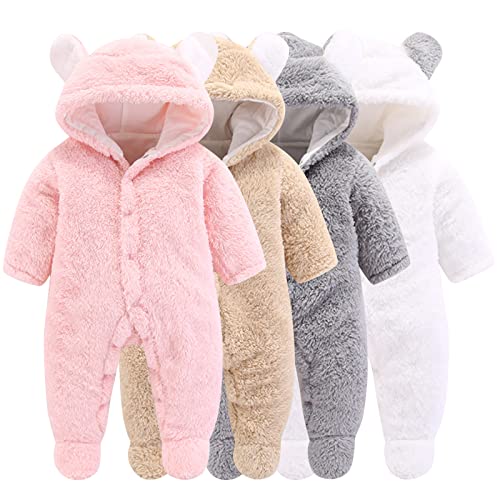Headline: What are Pramsuits?
Pramsuits are garments designed for babies and toddlers to keep them warm and comfortable during the colder months. They typically have a full-length zipper or buttons down the front for easy dressing and undressing. Pramsuits are made from warm materials such as fleece or padded synthetic fabrics, and they often feature a hood to keep the baby’s head and ears protected. These suits are worn over regular clothing and are an alternative to wearing separate coats, hats, and blankets.
Headline: Common Allergens in Pramsuits
Pramsuits, like any other clothing, can potentially contain allergens that may cause a reaction in sensitive individuals. Some of the common allergens found in pramsuits include:
- Fabric additives: Certain chemicals used in the manufacturing process, such as dyes, formaldehyde, and flame retardants, may cause allergies in some babies.
- Animal materials: Pramsuits made from wool, down feathers, or fur may trigger allergies in babies who are sensitive to these materials.
- Pollen and dust: If the pramsuit is not stored properly or if it has been exposed to pollen or dust, these allergens can be present and cause allergic reactions.
Headline: Choosing Pramsuits for Babies with Allergies
If your baby has allergies or sensitive skin, it is important to choose pramsuits that are hypoallergenic and made from natural, non-irritating materials. Look for pramsuits that are labeled as “hypoallergenic” or “allergy-friendly.” These suits are likely to be free from common allergens and have been tested for their safety on sensitive skin. Additionally, opt for pramsuits made from organic materials, such as organic cotton or bamboo, as these tend to be gentle on the skin and less likely to cause allergic reactions.
You should also avoid pramsuits with excessive decoration, as they may contain additional chemicals that could irritate sensitive skin. Choose suits with minimal or no unnecessary detailing, and opt for plain designs instead. It is also a good idea to wash the pramsuit before first use, using a gentle detergent that is free from fragrances and dyes, to remove any potential allergens that may be present from the manufacturing process.
Headline: Tips for Preventing Allergic Reactions
In addition to choosing the right pramsuit, there are a few other steps you can take to prevent allergic reactions in babies with allergies:
- Keep pramsuits clean: Regularly washing pramsuits in a hypoallergenic detergent can help remove any allergens that may be present.
- Avoid using fabric softeners: Fabric softeners can contain ingredients that may irritate sensitive skin. Consider skipping fabric softeners when washing pramsuits.
- Keep the pramsuit in good condition: Check the pramsuit regularly for any signs of wear or damage, such as loose buttons or frayed fabric. Repair or replace the pramsuit if necessary, as damaged garments may cause discomfort or allergies.
- Consult with a pediatrician: If your baby has known allergies or skin sensitivities, it is best to consult with a pediatrician before purchasing pramsuits or any other clothing items. They can provide specific recommendations based on your baby’s individual needs.
Headline: Alternatives to Pramsuits for Babies with Allergies
If you find that pramsuits are not suitable for your baby with allergies, there are alternative options to keep them warm and comfortable:
- Layering: Dressing your baby in layers allows you to adjust their clothing according to the temperature. Use breathable, hypoallergenic materials, such as organic cotton, as the base layer.
- Sweaters and cardigans: Instead of a pramsuit, you can opt for sweaters or cardigans made from hypoallergenic materials. These can be easily removed or added as needed to regulate your baby’s body temperature.
- Blankets: Wrap your baby in a soft, hypoallergenic blanket when going outside. Make sure the blanket is securely tucked in to keep them warm and comfortable.
- Footmuffs: Footmuffs are designed to fit inside a stroller or car seat and provide warmth and insulation. Look for footmuffs made from hypoallergenic materials without excessive decoration.
Remember, every baby is different, so it’s important to pay attention to your baby’s individual needs and consult with a healthcare professional if you have concerns about allergies or sensitivities.






